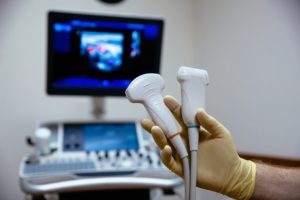7 Key Ophthalmic Ultrasound Maintainence Tips
 Medical ultrasound is a hugely profitable field of the medical market today. In 2015, the ultrasound market hit 5.2 billion, but it’s expected to make considerable growth in the next three years.
Medical ultrasound is a hugely profitable field of the medical market today. In 2015, the ultrasound market hit 5.2 billion, but it’s expected to make considerable growth in the next three years.
This growth is due to ultrasound becoming more useful than ever before. These days, it’s not only used for cardiac and gynecological purposes but even in orthopedics. Pain management specialists, rheumatologists, and sports physicians have found ultrasound to be essential in the care of their patients.
The usefulness of ultrasound is also growing because the rate of disease is rising, and technological advancements are more common throughout the world.
With ultrasound becoming so important to patients and even important to medical businesses, you can’t afford for your expensive machine to be on the fritz. Check out these 7 ways you can keep your ophthalmic ultrasound in good working order.
1. Get Organized
Office assistants love to chat, but make sure they don’t start gossiping until they’ve reviewed, recorded, and organized all the record pertaining to your ophthalmic ultrasound.
Have your staff review all the OEM information given to you when you purchased the machine. They should create a well-organized calendar of maintenance events that need to be strictly followed.
The execution of the maintenance schedule must be nothing less than timely and thorough, or you will put the health of your machine at serious risk.
Your staff will be able to carry out simple tasks like cleaning, but the necessary software updates may require a professional. Those needs should be specifically noted in your maintenance schedule.
2. Be Prepared
There’s nothing worse than realizing you’ve run out of toilet paper after you’ve already relieved yourself. Don’t let that happen with your ophthalmic ultrasound.
Some parts of your machine will expire with use, yet they are easy to replace. Those parts include bulbs and batteries.
It’s not difficult to have your staff order some extra to store in the office for such an event. It will save you from a potential situation where a patient is lying down waiting for the procedure, only to find out a bulb has blown. If you have extras, you won’t need to make them reschedule, and can continue business for the rest of the day.
3. Eliminate Dust
Of all the things that can hurt your ophthalmic ultrasound, dust can be the most serious. On the positive side, it’s easy to get rid of.
In your maintenance schedule, make sure your staff arranged regular cleanings of your equipment. This involved wiping down part of your machine with the appropriate cloth and cleaner.
As a preventative measure, purchase dust covers for every item you can, whether it’s your lens or the general machinery. Of course, you don’t want dust in the lens, but you don’t want it to get into any vents either.
4. Inspect Your Transducer
The first step to prolonging the life of your machine is to make sure anyone handling any of the parts knows how they should be used. Transducers need to be treated gently.
Make sure the staff organizing your maintenance schedule are aware that your transducer will need to be regularly inspected. Any member of the staff can carry out the simple inspection.
They need to check for any cracks or bulging in the lens, but also in the areas around the lens, like the nose. The cable should be inspected as well. Anything out of place means you’ll need a technician to come in as soon as possible. You don’t want to risk a small issue becoming a big one.
5. Check Your Control Panel
The control panel is one of the most important items in your machine. It helps the sonographer attain a clear image and without it, the images would be useless to both the doctor and the patient.
Anyone who views images from the ultrasound should regularly pay attention to their crispness. This isn’t an activity that needs to be recorded on your maintenance schedule, but rather something anyone at the office should do every time they see an ultrasound image.
Additionally, malfunctioning parts, even if they’re just keys on your keyboard, always need to be replaced. This includes the trackball assembly. You may need to contact a professional to conduct some of these replacements.
6. Monitor Your Monitor
An ultrasound has a lot of moving parts. One of those is the monitor that displays the ultrasound images, usually, for your patients.
If you have a monitor at home, whether it’s for your computer or television, you know it’s prone to experience issues from time to time. The same thing is true for your ultrasound monitor.
Anyone who uses the ultrasound should be aware of how the images display on the monitor. If there is an issue, like the images not being correctly aligned, a technician should be called immediately.
Don’t forget to also check the power supply. If there are any irregularities with the cord or plugs, they also need to be addressed immediately.
7. Sign a Service Contract
One of the easiest ways to ensure that your machine will always receive the care it needs to last as long as it can is to sign a service contract. These contracts are not often cheap, but they’re usually worth it.
Signing a service contract means that your maintenance schedule will often be followed by professionals who know how the equipment works and how to handle it. They will find any issues long before they affect your business.
Although your staff and sonographers can help keep an eye on many parts of your ultrasound, only a professional ultrasound technician will be able to identify if any of the components are performing below OEM recommendations.
Ophthalmic Ultrasound Maintenance
At Acertara, we know that an ultrasound is a huge investment. We want to help you keep your return on that investment.
Our team of experts is experienced in many realms of the ultrasound market, including probe repair. If your transducer needs maintenance, or if you just have some questions about your ultrasound, don’t hesitate to contact us today.
